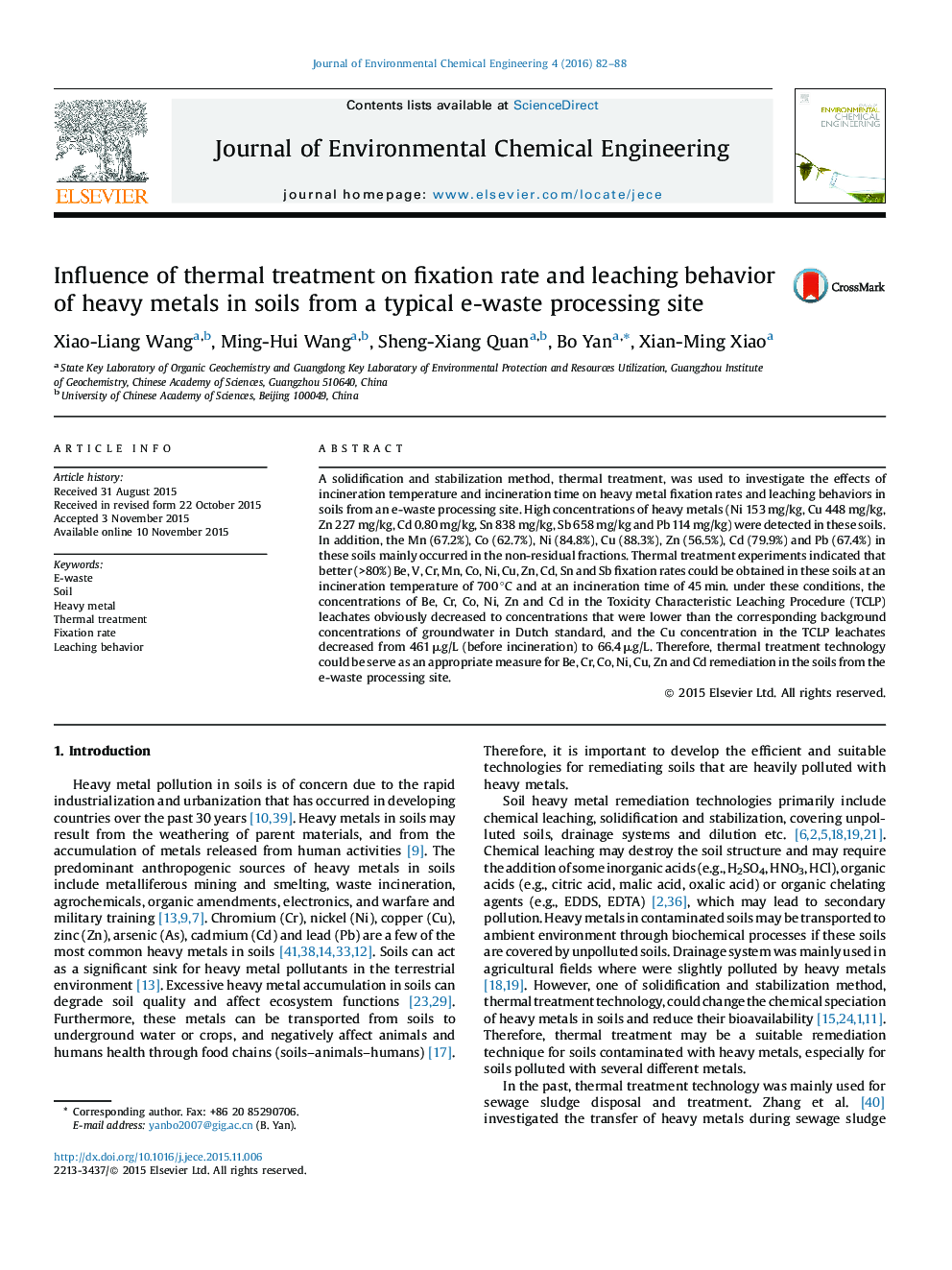| Article ID | Journal | Published Year | Pages | File Type |
|---|---|---|---|---|
| 221862 | Journal of Environmental Chemical Engineering | 2016 | 7 Pages |
A solidification and stabilization method, thermal treatment, was used to investigate the effects of incineration temperature and incineration time on heavy metal fixation rates and leaching behaviors in soils from an e-waste processing site. High concentrations of heavy metals (Ni 153 mg/kg, Cu 448 mg/kg, Zn 227 mg/kg, Cd 0.80 mg/kg, Sn 838 mg/kg, Sb 658 mg/kg and Pb 114 mg/kg) were detected in these soils. In addition, the Mn (67.2%), Co (62.7%), Ni (84.8%), Cu (88.3%), Zn (56.5%), Cd (79.9%) and Pb (67.4%) in these soils mainly occurred in the non-residual fractions. Thermal treatment experiments indicated that better (>80%) Be, V, Cr, Mn, Co, Ni, Cu, Zn, Cd, Sn and Sb fixation rates could be obtained in these soils at an incineration temperature of 700 °C and at an incineration time of 45 min. under these conditions, the concentrations of Be, Cr, Co, Ni, Zn and Cd in the Toxicity Characteristic Leaching Procedure (TCLP) leachates obviously decreased to concentrations that were lower than the corresponding background concentrations of groundwater in Dutch standard, and the Cu concentration in the TCLP leachates decreased from 461 μg/L (before incineration) to 66.4 μg/L. Therefore, thermal treatment technology could be serve as an appropriate measure for Be, Cr, Co, Ni, Cu, Zn and Cd remediation in the soils from the e-waste processing site.
